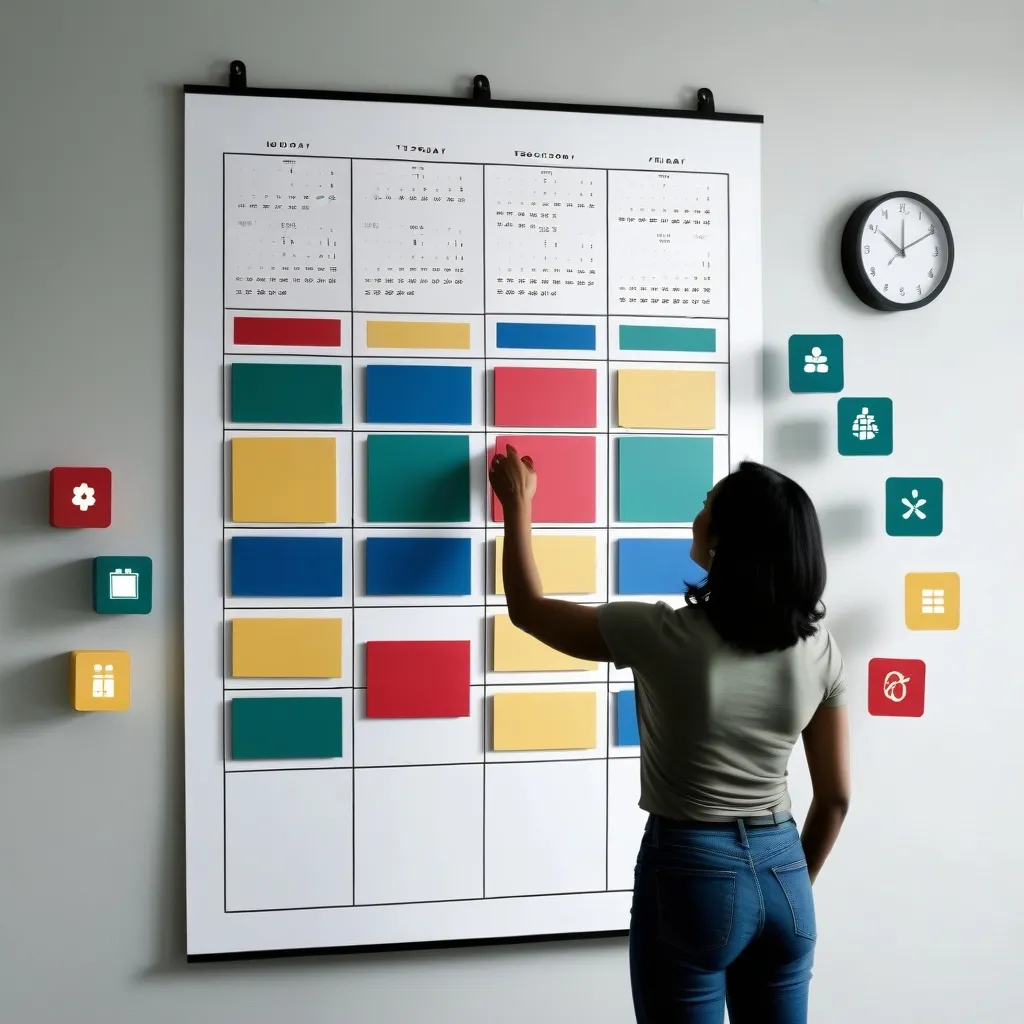Taking a Break: The Secret Weapon for Boosted Productivity
In our fast-paced world, it’s easy to get caught up in the hustle and forget about taking breaks. We often think that powering through tasks non-stop is the key to getting things done. But here’s the thing - our brains aren’t machines. They need regular pit stops to stay in top form.
Think of your brain as a smartphone battery. You wouldn’t expect your phone to run all day without a recharge, right? Same goes for your noggin. Without breaks, your mental battery drains fast, leaving you feeling foggy and unproductive.
So, how often should you hit the pause button? Well, there’s no one-size-fits-all answer, but a good rule of thumb is to take a breather every 30 minutes or so. This doesn’t mean you need to take a full-on siesta - even a quick stretch or a few deep breaths can do wonders.
For those of us chained to our desks (hello, fellow office warriors!), try the Pomodoro Technique. Work for 25 minutes, then take a 5-minute break. After four cycles, treat yourself to a longer 30-minute break. It’s like riding waves of productivity without wiping out.
Now, let’s talk about the length of these breaks. Short 3-5 minute breaks are great for quick recharges, but don’t shy away from longer 10-15 minute breaks either. These give you time for a quick walk, some stretches, or even a power nap if you’re feeling brave (just don’t let the boss catch you!).
But here’s the kicker - what you do during your breaks matters. If you’ve been staring at a screen all day, the last thing you want to do is scroll through your phone. That’s like trying to quench your thirst with a glass of salt water. Instead, try something completely different.
Get physical! A short walk or some desk stretches can get your blood flowing and reduce stress. Plus, it’s a great excuse to show off those funky yoga moves you’ve been practicing.
If you’re feeling social, chat with a colleague. Just make sure it’s not your boss if you find yourself constantly watching what you say around them. That defeats the purpose of a relaxing break.
For the zen masters among us, try some mindfulness exercises. A few minutes of meditation or deep breathing can help clear your mind and reduce mental fatigue. Even something as simple as savoring a healthy snack can be a form of mindfulness. (Yes, that means you have permission to really enjoy that chocolate bar hidden in your desk drawer.)
Sometimes, a change of scenery can make all the difference. Step away from your desk and find a new spot for your break. The break room, a nearby park, or even just a different corner of the office can help you disconnect from work mode.
Now, I know what you’re thinking - “But I’ll forget to take breaks!” Don’t worry, I’ve got you covered. Set reminders on your phone, computer, or even that old-school kitchen timer collecting dust in your drawer. There are even computer programs that can lock you out for a set time if you need that extra push.
Making breaks a priority can be tough, especially when you’re in the zone. But remember, breaks aren’t a luxury - they’re a necessity. They’re an investment in your productivity and well-being. So, plan them out like you would any other important task.
Be specific with your goals. Instead of a vague “I’ll take breaks sometimes,” try “I’ll take a 5-minute break every hour.” And don’t just wing it when break time comes around. Plan your activities in advance. “At 3 PM, I’ll take a quick walk around the block.” See? Easy peasy.
But beware - not all breaks are created equal. Endless scrolling through social media or aimlessly browsing the web can actually drain you more. These activities overwhelm your brain, leading to decision fatigue and negative emotions. It’s like trying to relax by running a marathon - counterproductive, to say the least.
Instead, opt for activities that engage you without taxing your brain too much. Listen to some tunes, do a quick puzzle, or practice some mindfulness. These can help you recharge without feeling drained.
Remember, everyone’s different. What works for your cubicle buddy might not work for you. Maybe you need more frequent breaks if you’re in a high-stress job. Or if your job is less mentally demanding, shorter breaks might do the trick.
If you’re in a creative field, using your breaks to work on personal projects can be a great way to avoid burnout. Don’t worry about making these projects perfect - the act of creating something just for you can be incredibly rejuvenating.
Implementing a break schedule might take some planning, but trust me, it’s worth it. Start by deciding how often you want to take breaks and pencil them into your calendar. Choose your break activities ahead of time to avoid the dreaded “What should I do now?” dilemma. Set those reminders we talked about earlier, and most importantly, follow through. Make breaks a non-negotiable part of your day, just like that morning coffee you can’t live without.
Let’s look at some real-life examples to bring this home. If you’re a software developer, you might take a 5-minute break every hour to stretch and move around. During longer breaks, you could go for a short walk or do some light exercises. Gotta keep that blood flowing to fuel those coding sessions!
For the creative types out there, like graphic designers, you might use your breaks to work on personal projects or engage in activities that spark your creativity. Doodle in a sketchbook, write a short story, or even practice your origami skills. Who knows, you might stumble upon your next big idea during these creative breaks.
In the end, incorporating scheduled breaks into your daily routine is a simple yet powerful way to boost your productivity, reduce stress, and improve your overall well-being. It’s about understanding that breaks aren’t just nice to have - they’re essential for peak performance.
So, the next time you feel the urge to power through without a pause, take a step back. Give yourself permission to take that well-deserved break. Your mind and body will thank you, and you might just find yourself getting more done in less time.
Remember, taking breaks isn’t a sign of laziness - it’s a sign of smart living. It’s about working smarter, not harder. So go ahead, embrace the power of the pause. Your future, more productive self will thank you for it.
Now, if you’ll excuse me, I think it’s time for my break. Maybe I’ll finally master that origami crane…or maybe I’ll just enjoy a cup of coffee in peace. Either way, I know I’ll come back refreshed and ready to tackle whatever comes my way. And isn’t that what productivity is all about?






